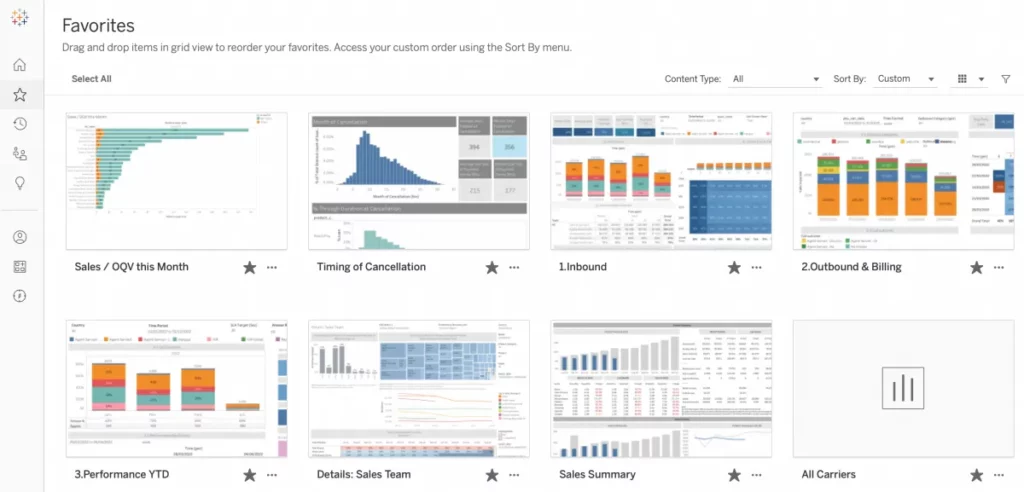From small and medium-sized businesses to Fortune 500 conglomerates, the success of a modern business is now increasingly tied to how the company implements its data infrastructure and data-based decision-making.
According to Statista, the aggregate data volume created, captured, copied, and consumed globally is expanding at aggressive rates, reaching a spectacular amount of 44 zettabytes in 2020. With the advent of advanced technologies and the prevalence of data-driven culture, this big data revolution shows no signs of slowing down. It is highly probable that by 2025, global data creation will have grown by 180 zettabytes, if not more.
Such metrics make one clear: organizations are increasingly becoming increasingly saturated with information. A new approach must be designated so businesses can optimize their performance, given the ubiquity of the information influx. The answer lies in data analytics in an atmosphere where big data dominate our digital landscape.
Robust data analytics enable businesses to uncover unique patterns and insights from raw, unstructured data sets, which ultimately end up propelling ideal business strategies. This article revolves around how our leaders and senior management, in particular, use this capability to derive sustained competitive advantage and incorporate it into day-to-day business operations.
Big Data Origin
Although the exact origin of the term “Big Data” remains ambiguous, it has been employed in different specialist circles since the early 1990s. It has recently become a fashionable mainstream buzzword across several different industries. It is essential to acknowledge that data analytics cannot be solely credited to the triumph of modern technological innovations. For instance, we see that the ancient roman empire could determine the optimal distribution for their armies through careful analysis of their military statistics.
However, as we just observed, the volume and speed with which data has been generated in the last two decades has grown beyond human comprehension. Not surprisingly, even the most advanced technologies sometimes do not yet suffice to analyze all the available data sets. This is where the notion of big data and data analytics steps in.
The need to analyze these increasingly larger and unstructured complex data sets is how traditional data analysis transformed into big data. The new stage is occupied by data and machine learning engineers, alongside data scientists who play a crucial role in consolidating and analyzing big data for analytical and decision-making purposes.

Understanding Data Analytics – The Modern Data Analytics Stack
To make it constructive for businesses, data has to be structured, cleansed, and organized; the combination of tools and technologies that divert data through different processing pipelines is what makes up the modern data analytics stack. This enables various analytical professionals to derive insights that allow senior management to improve business-related outcomes.
The resulting benefits are endless, especially for senior management. Not only are increased revenue opportunities imminent, but data-driven decision-making also offers more effective, personalized marketing and improved operational efficiencies, giving firms an edge over their competitors. Now that we have the general overview of the process, let’s dig deeper into the five essential steps of data analytics for senior management:
- Before delving into the nitty-gritty of data analysis, project and senior managers need to define why they need data analysis in the first place. The answers typically stem from questions such as:
- How to reduce the cost of production without a trade-off with quality?
- How to increase product sales?
- Do customers have a positive perception of our brand?
In general, before commencing the project, managers need to design a roadmap that lays down the clear purpose of the analytical project and identifies metrics to track during the process and data sources for data collection.
- Data professionals then collect structured, unstructured, and semi-structured datasets from various sources. This is typically divided into primary/internal sources comprising data collected from CRM software, ERP systems, marketing automation tools, etc. Also, the secondary/external sources that involve data collection from web server logs, internet clickstream data, and social media API, to name a few.
- Not all data is good data. A report by CrowdFlower conveys that data scientists usually spend 51% of their time organizing unruly data. Once data is procured from the necessary sources, it has to be adequately prepared and processed before it is stored in data warehouses or the more advanced–data lakes and data mesh. Apart from organizing and partitioning the data for relevant analytical queries, analytical professionals must also identify and rectify duplicate and anomalous data, among other inconsistencies.
- Once the data is adequately manipulated, it is analyzed. This can be done in a variety of ways. One technique is through data mining which involves clustering analysis, anomaly detection, and association rule mining to uncover hidden trends in data sets. Nowadays, businesses are increasingly implementing Artificial Intelligence (AI) and Machine Learning (ML) algorithms, particularly when it comes to predictive analysis, to draw reasonable conclusions about future trends from past data patterns. Business Intelligence (BI) and data visualization software also generate easy-to-understand reports and visualize trends, providing managers with fast, optimum data solutions.
- Finally, the results from data analytics have to be interpreted. Hence, project leaders and senior management can implement data-driven optimal decisions, translating all the potential benefits into realized business benefits.
Management Perspectives on Data Analytics
Following up with the advent of big data, there has been a shift from experience-based decision-making to a greater reliance on data-driven strategies in modern business management. This sometimes means that the executives and managers with decades of experience in their area of expertise are now reluctant to switch as it may undermine their traditional role. So, where does that leave the interplay of senior management and data analytics?
Data analytics does not mean that the intuition and experience of the leaders should be ignored. Instead, they have a pretty critical role in deriving business value from data analytics. Their managerial function can be interpreted by the following famous quote by Dr. Mike Schmoker:
“Things get done only if the data we gather can inform and inspire those in a position to make a difference.”

Thus, we see how the insights derived from BI and AI analytics can propel managers to approach decision-making on a more concrete ground. Here’s how data analytics and senior management work in unison to derive ideal business outcomes:
Employee retention
Many organizations are currently struggling with the Great Resignation movement, characterized by high industry turnover rates. In this situation, managers are looking for ways to retain talent and improve employee engagement. This is where data analytics comes into play. Research shows that employing Human Resource Management System (HRMS), which assimilates with company data, yields improvements in employee performance, engagement and personnel, organizational, recruitment, training, and salary management.
Enhanced cybersecurity
During the COVID-19 pandemic, a spike was observed in fraudulent practices, account takeovers, and other cyber threats. Therefore, another sphere of challenge that managers have to mitigate is to explore workable solutions around cyber threats and comply with new regulatory standards.
Data scientists and engineers can implement ML models to detect fraud and potential risks, enabling monitoring and reporting. Businesses are also resorting to risk management analytics to secure the large influx of data.
Thus, we see how integrating analytics into risk management is more critical than ever.
Efficient operations
Data analytics also aid business leaders in improving operational management by assessing different metrics such as workforce effectiveness and process outcomes. It also allows managers to identify burdensome, financially draining processes, replacing traditional methodologies with more streamlined workflows that enhance operational efficiencies.
Enrich customer experiences
Victor Nilson, a senior vice president at AT&T, stated that their firm is paramount to customer care. In an interview with McKinsey, he explained how their customer care centers are saturated with a myriad of complex products. Even the most straightforward products sometimes yield a complicated workflow. So how does AT&T simplify the process? According to Mr. Nilson, big data techniques are implemented to quickly identify and analyze all the different permutations to resolve and enhance a particular situation.
To summarize, businesses now have all the necessary information to acquire customer satisfaction and offer personalized services.
Enhanced retail & marketing
Data analytics enable businesses to monitor market trends and subsequently launch products they already know will be positively received by their customers. For instance, retailers can analyze the consumer purchasing frequency data among the high-priority customer band to better understand the market’s demand. Furthermore, marketing teams can now quickly determine what type of advertisements resonate with their target demographic through processing descriptive datasets related to the target market, distribution channels, etc. Both of these innovations bring about a much more secure product management.
Optimal business strategies
Managers with a deep understanding of data analytics turn out to be better leaders as they tend to base their decisions and reasoning on logic and facts rather than intuition and opinions. A business strategy is only as good as its data, and data analytics enables managers to formulate the best possible strategy, considering potential future trends.
For example, we can see how Netflix employs predictive analysis to determine what sort of entertainment content they recommend to users depending on their watching patterns.
How Can Businesses Get the Most Out of Big Data?
We now know that simply collecting big data does not suffice. Even then, if the advanced analytics are too complicated to understand, managers will likely brush it off. This is why companies need to recruit “translators.” These specialists can bridge the gap between organizational and functional areas and establish effective communication.
Consider the following situations: business managers generally have a partial understanding of data available no matter how informally well-versed they are in data analytics. Therefore, in this case, the analytics manager with a more concrete understanding of statistics and analytics can proactively offer solutions and options.
In essence, senior management needs to work alongside translator specialists to ensure that all the perspectives are brought to the table and decisions are made in their light.
-

13 Reasons Why Data Is Important in Decision Making
Wrapping Up
Everyone who believes in a data-driven culture should work together to persuade others to adopt and maintain this analytical approach, from CEOs to the board of directors to analytical professionals. In this scenario, working together quickly and flexibly is critical. The crux of the situation is that data analytics is not here to replace an organization’s senior management and the experience-based expertise of our leaders.
Businesses can have the top data scientists and engineers, high-quality data sets, the most visually stunning graphs and charts, and the best–fair and accurate ML algorithms. Unfortunately, these perks will be for naught if managers do not leverage data analytics to inform and drive critical business decisions. To summarize, senior-level leadership plays an essential role in determining how effective a company’s analytical efforts are.

